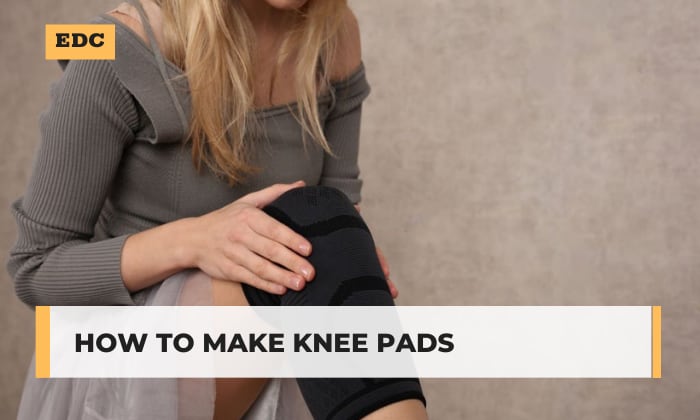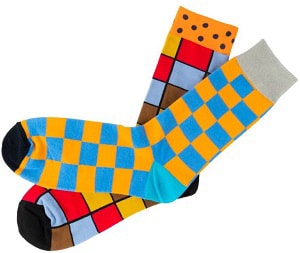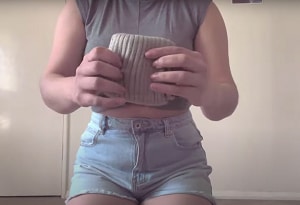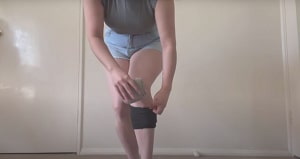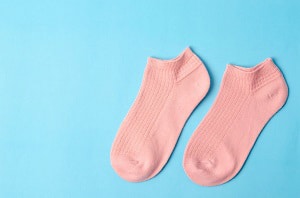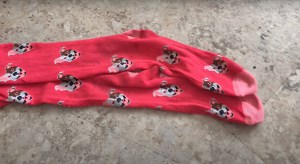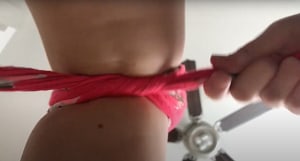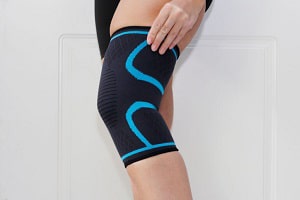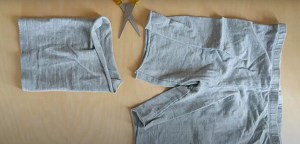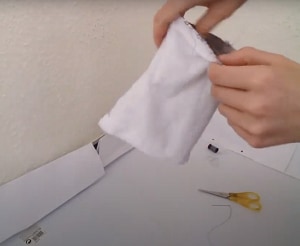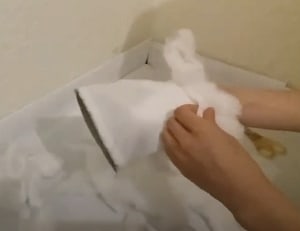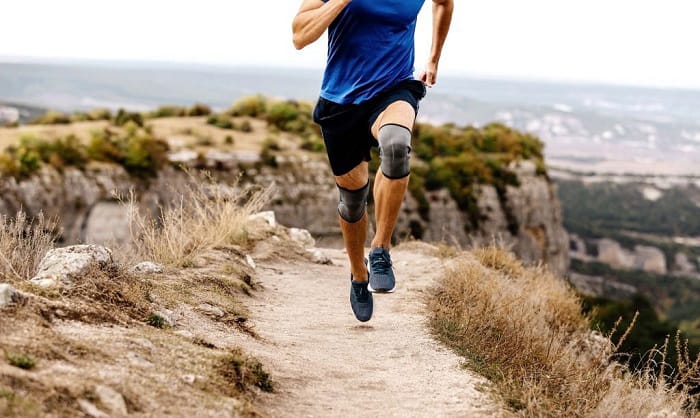Before we begin, allow us to preface this DIY tutorial by stating that nothing can replace good-quality knee protectors for long-term use.
While pricey, these knee pads feature foams, gels, or anti-puncture plastic shells that provide better cushioning and protection than any homemade versions.
But this does not mean you should not learn how to make knee pads. This knowledge can come in handy when you’re in a pinch.
Table of Contents
No-sew Knee Pads
If you need a quick and easy tutorial to make cheap knee pads, gather the following materials:
- Knee compression sleeves
- Your choice of padding material can be any of the following:
- Thick old socks
- Fluffy leg warmers
This method will cost you nothing if you already have knee sleeves and old socks. At most, you could be spending a few dollars if you buy the sleeves from a dollar store.
We recommend wearing these all-purpose knee pads for housework and exercising at home.
Step 1: Fold the socks (or leg warmers)
Fold your padding material 3–4 times into a square. Be sure that it has enough length and width to cover your knee but is still thick enough to provide sufficient cushioning. To be clear, the folded sock or leg warmer should be around 0.7-1 inch thick when fully pressed down.
Repeat the same with the other sock/leg warmer.
Step 2: Wear your knee sleeves and folded socks
Put on the knee sleeve to cover your knee, lower thigh, and upper calf. Grab the top part of the sleeve and then pull three-fourths of its length down to reveal the kneecap.
Position the folded sock or leg warmer onto your kneecap with one hand and then pull the knee sleeve back up with the other.
Alternatively, you can pre-position the makeshift paddings inside the knee sleeves, then slip one hand through the sleeve to hold the sock in place. Afterward, stretch the sleeve wider to accommodate your feet, then pull it upward along with the padding.
- If you don’t have knee compression sleeves, you can make knee pads out of socks by tying them to your knees with plastic bags.
For a tighter fit, you can undo the knot and tie the plastic bags again until it feels more comfortable to kneel on.
Step 1: Selecting socks
For this tutorial, you need:
- One pair of knee-length socks. They should be long enough that you can easily tie them around your knees.
- Several unused foot socks or ankle socks
If you want to create cute knee pads, look for bigger socks with charming designs.
Step 2: Layer the small socks
To create padding, stack all your socks on top of each other. Note that you need to use the same amount of socks for both knees.
After layering them, grab the entire bunch to slip into the knee-length socks. Flatten the pile of socks evenly so that you do not feel any lumps when you kneel.
Step 3: Put on the DIY pads
Place the padded portion of the long sock on your kneecap. Then use its two ends to tie a knot at the back of your knee.
Sewing Knee Pads
If you are looking for a knee pad sewing pattern, you’ll find plenty of options online.
But for this homemade knee pads tutorial, we will keep things simple so that both sewing pros and beginners can follow. Without further ado, gather these materials:
- Absorbent cotton (or shock-absorbent foam)
- Leggings that you no longer use
- Scissors
- Threads
- Needle
Step 1: Cut the old leggings
By nature, leggings are stretchy, so you don’t need to go to fabric shops to look for spandex or neoprene. Plus, they are already sewn into a tube—that’s less work for you!
Simply wear your leggings, mark the portion where your knees hit, and cut them to create sleeves. You can make long knee pads by cutting longer pieces from the leggings.
Next, cut two rectangles or squares from the same pants to make pockets for the cotton filling.
Step 2: Sew the rectangular fabrics
Position the rectangular fabrics onto the sleeves and sew them together.
At this point, you only need to sew the sides and the bottoms, leaving the top portions open. This way, you can fill them with cotton.
Step 3: Fill the pockets with cotton
Insert as much cotton (or foam) as you like to create ample padding for your knees. Then stitch the opening shut.
Watch the video below to see how to make DIY knee pads with old leggings and foam. DIY Knee Pads
Frequently Asked Questions
What fabric is used for knee pads?
It depends on the brand and where you intend to wear them.
For instance, most sports brands use polyesters, such as Mizuno volleyball pads and Body Prox knee pads for floor exercises. These materials are generally for indoors and outdoors.
But if you want something comfier outdoors, we recommend knee pads made of neoprene, as it offers optimal breathability and moisture-wicking properties. One good example of this is the Fox Launch D30.
Meanwhile, some manufacturers fashion soft-capped knee pads for cleaning floors or gardening out of nylon, spandex, and lycra.
What padding is in knee pads?
Typically, manufacturers incorporate cushioning materials made of gels, foams, and rubbers. However, keep in mind that workers, hobbyists, and athletes have very different needs in terms of cushioning.
For example, volleyball players’ knees get pounded each time they jump, lunge, or dive into the floor. Hence, they need cushions that can withstand the impact.
For work, employees kneel for extended periods on abrasive surfaces. It makes sense for them to invest in a hard-shell that can protect their knees from scraping.
But if you only work on DIY projects or gardening on the weekends, you can get away with low-quality knee pads.
What to use instead of knee pads?
Kneeling mats are a good alternative to knee pads. Appropriate for indoors and outdoors, these mats are usually made of hardwearing materials like rubber or polyurethane.
Conclusion
As you can see, the steps on how to make knee pads do not require fancy sewing machines! In this article, we provided no-sew options for those who do not have a spool of thread and a needle readily available.
Using a bunch of socks, you can construct your makeshift pads in a couple of minutes. With that, we’d like to remind you these DIY knee pads are just a quick fix. They do not provide the same level of protection as the ones that you see in sports and workwear shops.

Veronica is our content editor. She is a talent in delivery. Her main work is editing and writing articles that are both informative and simple to follow. She is in charge of synthesizing our understanding of what personal protection equipment (PPE) is needed in each job, how to best apply it, and how to visualize that equipment.


